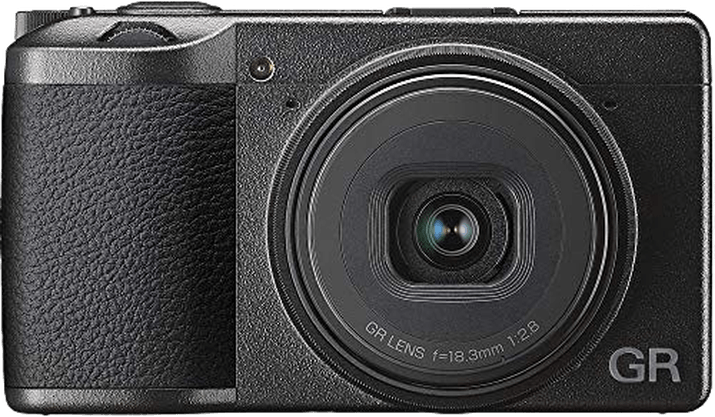Ricoh GR III vs Sony ZV-1 Comparison
Ricoh GR III

Sony ZV-1

The Ricoh GR III edges out the Sony ZV-1 with a score of 66/100 compared to 65/100. Both cameras are compact models, with the Ricoh GR III announced in 2018 and the Sony ZV-1 in 2020. They share similarities in size, with the Ricoh GR III measuring 109 x 62 x 33mm and the Sony ZV-1 at 105 x 60 x 44mm.
The Ricoh GR III excels with its lighter weight of 257g, making it more portable than the Sony ZV-1, which weighs 294g. On the other hand, the Sony ZV-1 has a lower launch price of $800, compared to the Ricoh GR III’s $899 price tag, making it more affordable.
Each camera has its advantages, with the Ricoh GR III offering greater portability and the Sony ZV-1 being more budget-friendly. Ultimately, the choice depends on the user’s priorities and preferences.
Ricoh GR III vs Sony ZV-1 Video Performance
The Sony ZV-1 outperforms the Ricoh GR III in video capabilities with a video score of 91/100 compared to the Ricoh GR III’s 70/100. Both cameras share some common features, such as time-lapse functionality built in. However, the Sony ZV-1 offers superior video specifications, making it the better choice for video enthusiasts.
The Sony ZV-1 boasts a maximum video resolution of 4K (3840 x 2160), whereas the Ricoh GR III’s maximum video resolution is Full HD (1920 x 1080). This means that the Sony ZV-1 can capture videos with higher detail and clarity than the Ricoh GR III. In addition, the Sony ZV-1 has a maximum video frame rate of 120fps, which is double the Ricoh GR III’s 60fps. This allows the Sony ZV-1 to produce smoother slow-motion footage and provide more flexibility in post-production.
Although the Ricoh GR III has a lower video score, it still offers quality Full HD video recording and time-lapse functionality. This might be sufficient for casual videographers or those who primarily focus on photography but occasionally dabble in video.
Considering the video specifications of both cameras, the Sony ZV-1 clearly outshines the Ricoh GR III in terms of video performance. With 4K resolution and a higher frame rate, the Sony ZV-1 caters to more serious videographers or content creators seeking higher quality footage. On the other hand, the Ricoh GR III may suffice for those who prioritize photography and only require basic video capabilities.
Ricoh GR III vs Sony ZV-1 Features and Benefits
The Ricoh GR III wins the feature comparison with a score of 70/100, while the Sony ZV-1 scores 68/100. Both cameras share several specifications, including a 3-inch screen size, touchscreen capability, WiFi, and Bluetooth connectivity. However, there are noteworthy differences that set these two cameras apart.
The Ricoh GR III is superior in screen resolution with 1,037,000 dots compared to the Sony ZV-1’s 921,600 dots. This higher resolution provides a sharper and clearer image on the camera’s screen, making it easier to review and compose shots.
On the other hand, the Sony ZV-1 has a flip screen, which the Ricoh GR III lacks. The flip screen is a valuable feature for vloggers and content creators, as it allows them to see themselves while recording or taking selfies. This advantage makes the Sony ZV-1 more suitable for users who prioritize this functionality.
Neither camera has GPS, which might be a drawback for users who wish to geotag their images. However, both cameras offer WiFi and Bluetooth connectivity, making it convenient to transfer images and remotely control the camera via a smartphone.
Comparing these two cameras, the Ricoh GR III’s higher screen resolution makes it a better choice for photographers who prioritize image clarity on the camera’s screen. The Sony ZV-1, with its flip screen, is more suitable for vloggers and content creators who need to see themselves while recording. Ultimately, the right camera depends on the user’s specific needs and preferences.
Ricoh GR III vs Sony ZV-1 Storage and Battery
The Sony ZV-1 wins in the storage and battery category with a score of 29/100, while the Ricoh GR III scores 27/100. Both cameras have one memory card slot and support USB charging. They accept SD, SDHC, and SDXC memory cards, with the ZV-1 also compatible with Memory Stick Pro Duo and Pro-HG Duo cards.
The ZV-1 outperforms the GR III in battery life, providing 260 shots per charge compared to the GR III’s 200 shots. This advantage makes the ZV-1 more suitable for extended shooting sessions. The GR III, however, does offer internal storage, which could be beneficial in situations where an additional memory card is unavailable.
Despite the ZV-1’s slight advantage in battery life and memory card compatibility, both cameras have limitations in their storage and battery capabilities. Users must consider these factors when deciding on the ideal camera for their needs.
Ricoh GR III vs Sony ZV-1 – Our Verdict
Are you still undecided about which camera is right for you? Have a look at these popular comparisons that feature the Ricoh GR III or the Sony ZV-1:

